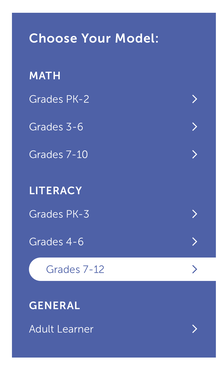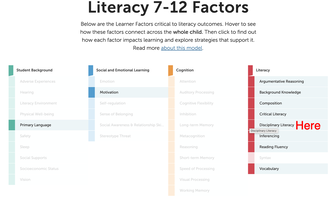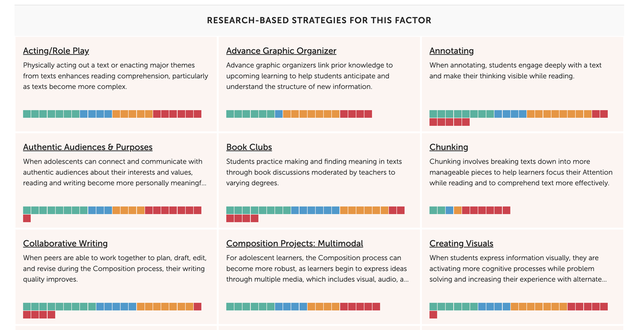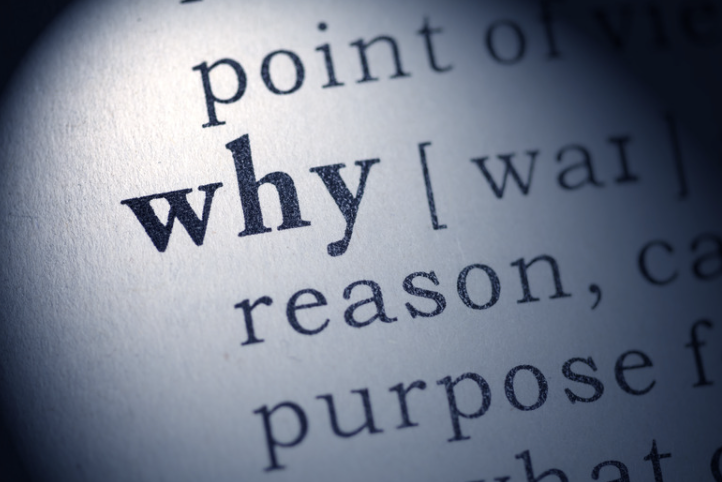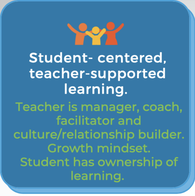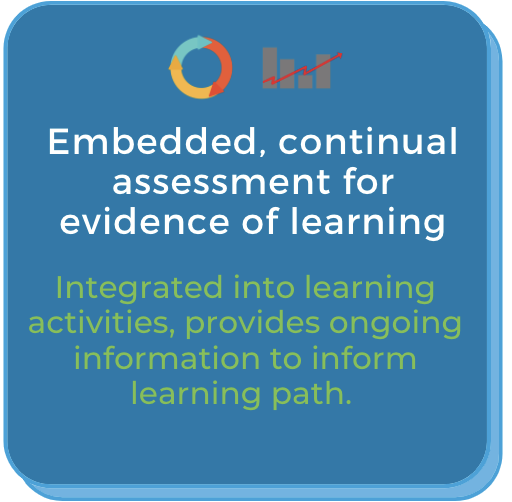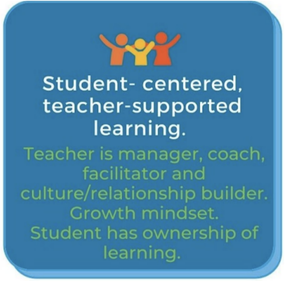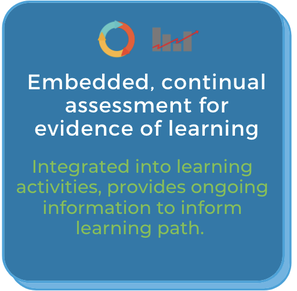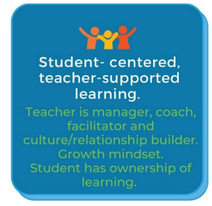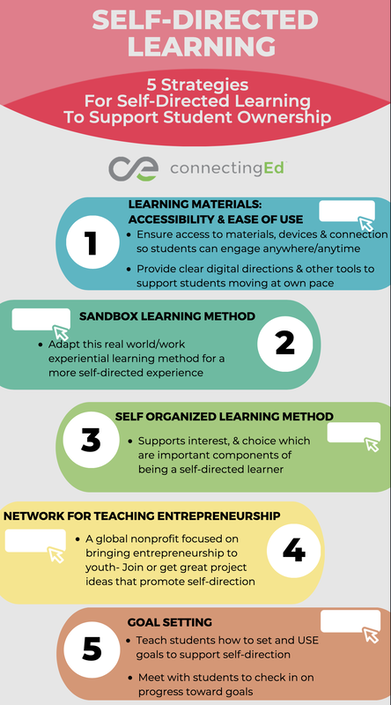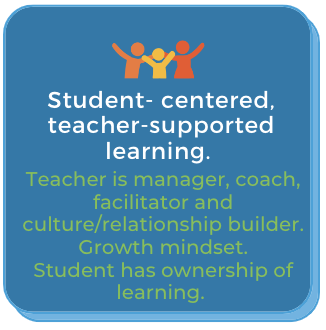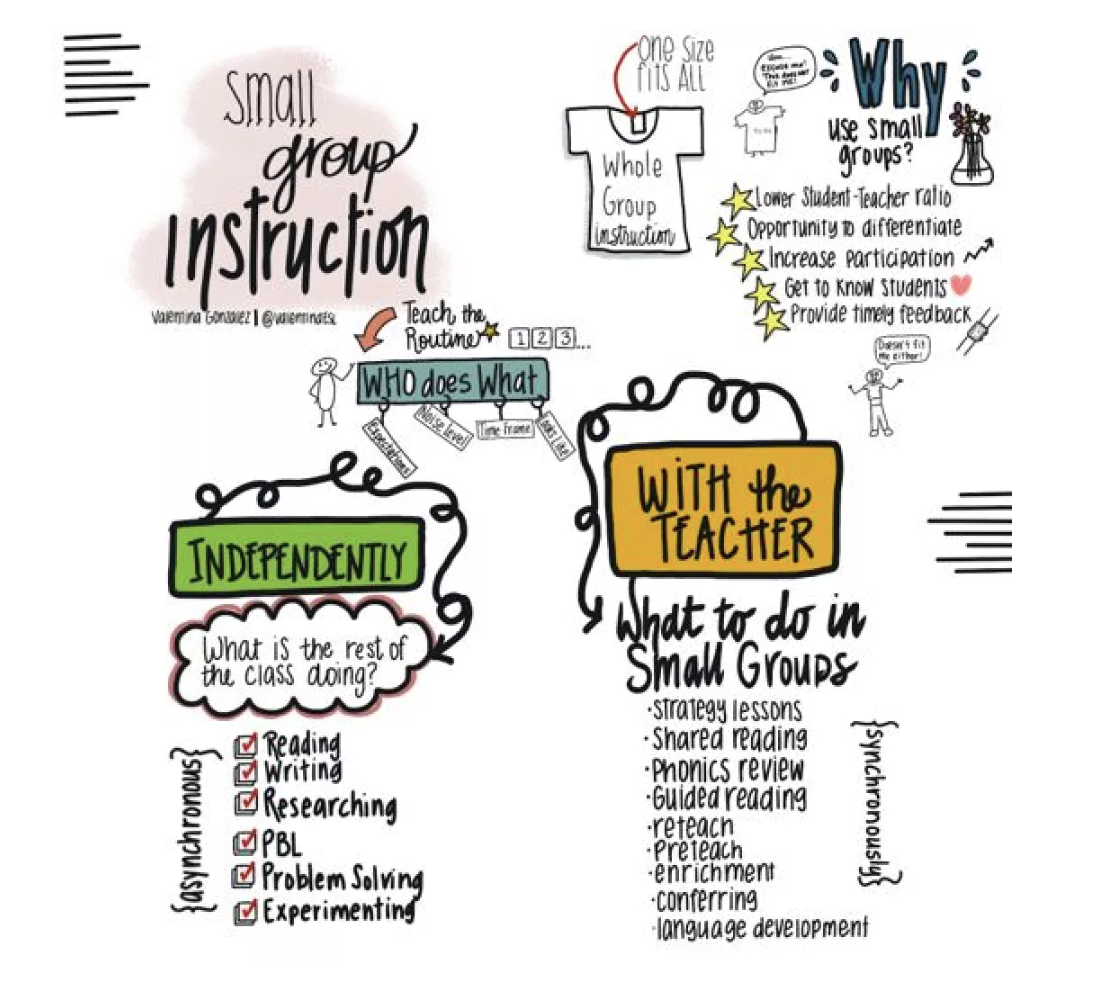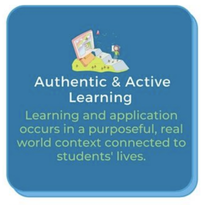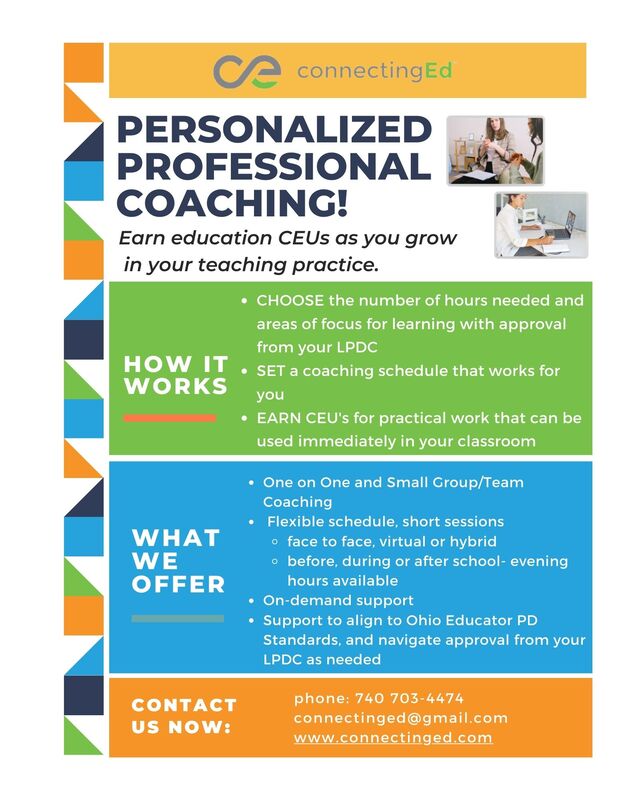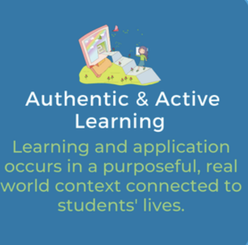
We chose the LVP Navigator as this month's resource because of the synthesized amount of research by Digital Promise and the offer of great strategies to help us engage the full diversity of learners. The added bonus is that they organized everything in an easy-to-search navigation experience.
Overview
To find strategies to meet the needs of your diverse learning population, after you open the navigator, choose a model. Next explore different factors such as learner background, social-emotional learning, cognition, etc.. that LVP has aggregated to help you hone in on targeted areas. Then find curated strategies and resources to use immediately!
| Here’s an example A 7th grade Science teacher has a series of readings that students need to engage with as a part of the learning process. To take into account learner variability, she chooses the “model” 7-12th Grade Literacy in the navigator tool. | She’s interested in factors related to “disciplinary literacy,” so she selects this factor, which brings up research about this factor and a curated list of resources and strategies she can use in the classroom. For example, one strategy she’s interested in is “advanced graphic organizer” She pulls up the strategy, reviews it, and adds it to her lesson. |
- There’s so much here in the navigator! We recommend spendings some time just pursuing the factors alone. They can help us think through different variabilities in learners' situations that we may not have considered or tend to forget about.
- Intermediate or High School content area teacher? Use the literacy models to support all disciplines!
- Do you work with adult learners through professional development? In addition to math and literacy models, there is one for adult learners.
- Learn more about Learner Variability Learner Variability Is the Rule, Not the Exception.
Don’t Forget!
- After you use the LVP Navigator, tell us what you think here in the comments below.

